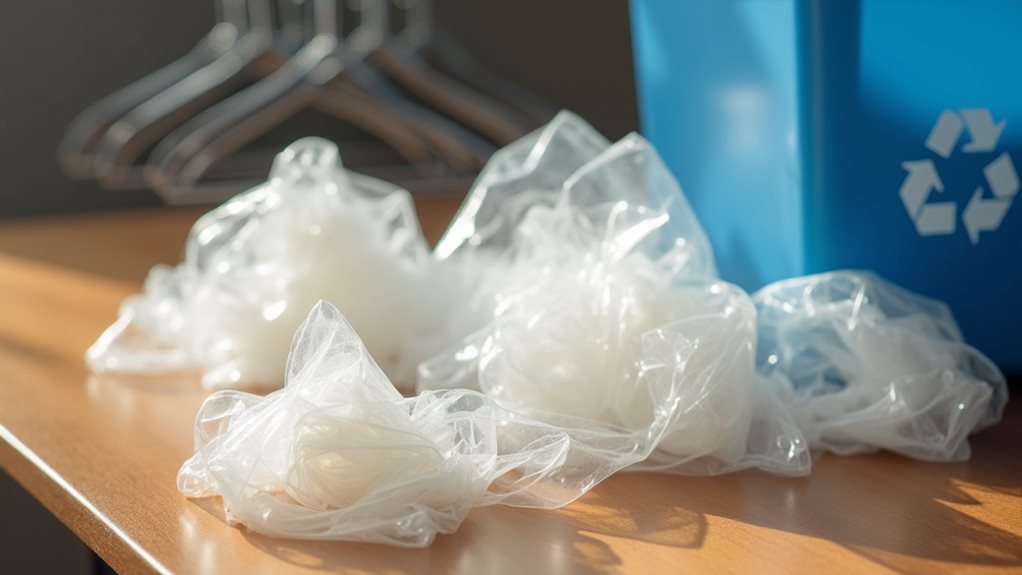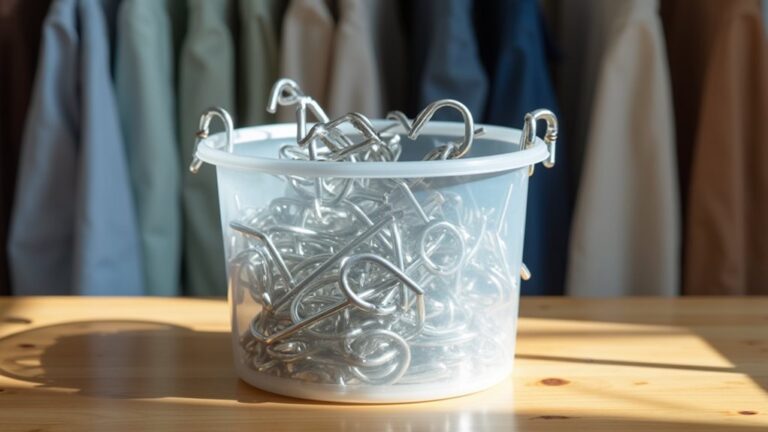You can definitely recycle dry cleaning bags, though they won’t go in your curbside bin since these lightweight plastic films jam up sorting machinery—trust me, recycling facilities aren’t fans of that chaos! Instead, you’ll need to take them to store drop-off programs at retailers like Walmart, Target, or H-E-B, where they’re properly processed with other plastic films. Just remove any receipts, hangers, or lint first, and you’ll discover even more eco-friendly strategies ahead.
Understanding Dry Cleaning Bag Materials and Environmental Impact
When I first started paying attention to those thin, crinkly bags that came home with my freshly cleaned blazers, I honestly had no idea what they were made of or where they’d end up—turns out, like me, most people don’t realize these seemingly innocent plastic covers are crafted from low-density polyethylene, or LDPE for short, which carries the #4 recycling symbol and represents a massive environmental challenge we’re all unknowingly contributing to.
Here’s the kicker: Americans toss about 300 million pounds of these dry cleaning bags annually, and unlike your banana peels, LDPE doesn’t break down naturally.
While you can’t recycle plastic bags in your curbside bin, specialized recycling facilities accept them, turning what could become permanent plastic pollution into sustainable practices that actually make a difference.
The lightweight nature of these bags means they can jam sorting machinery at standard recycling facilities, which is why they require special handling at designated drop-off locations.
Why Curbside Recycling Programs Don’t Accept Dry Cleaning Bags
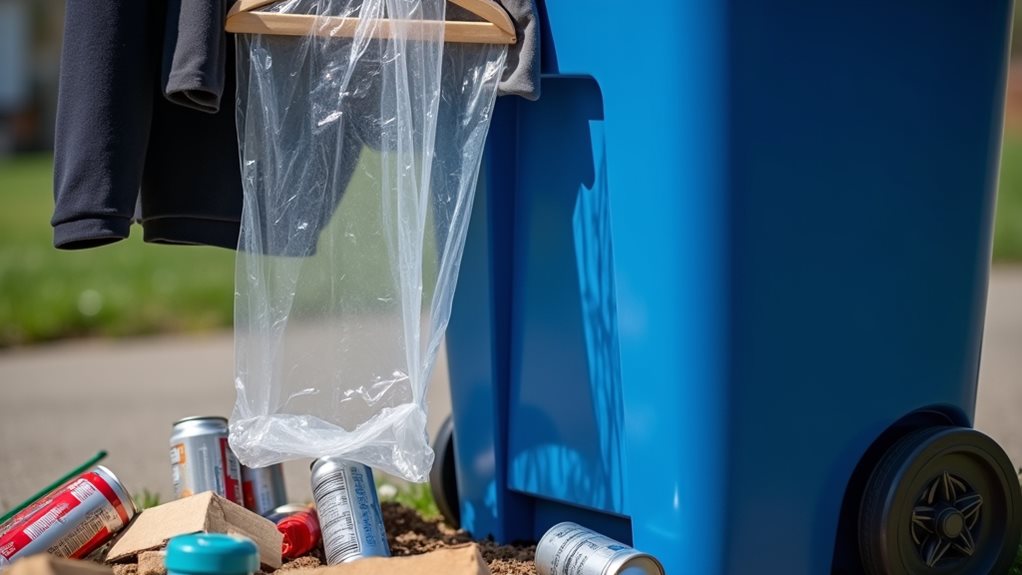
Although I used to confidently toss my dry cleaning bags into the recycling bin alongside my cereal boxes and soda bottles, feeling like an environmental champion, I learned the hard way that curbside programs absolutely hate these flimsy plastic bags—and for good reason.
These lightweight film plastics wreak havoc on recycling facilities, tangling around machinery like clingy relatives at family reunions 😅. The contamination they cause can compromise entire batches of recyclables, sending perfectly good materials straight to landfills instead.
Most recycling programs simply aren’t equipped to handle the sorting and processing challenges that dry cleaning bags present. Instead, you’ll need to find designated drop-off locations or participating retail stores with specialized film plastic programs.
Store Drop-Off Programs for Plastic Film Recycling
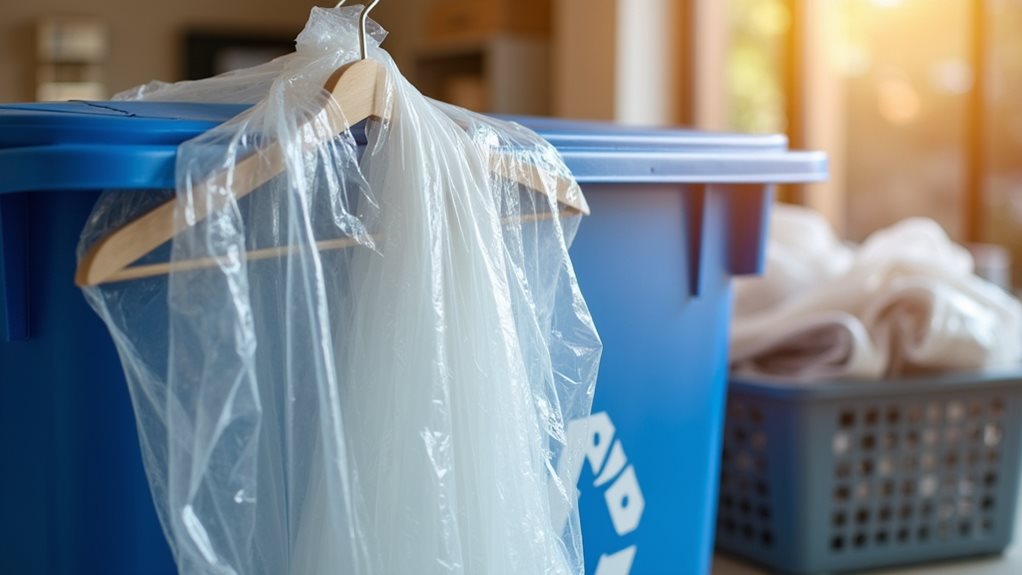
Since discovering that my local grocery store had quietly become a plastic film recycling hero, I’ve made it my mission to spread the word about these surprisingly convenient drop-off programs that many shoppers walk right past without noticing.
Major retailers like Walmart, Target, and H-E-B have established dedicated recycling centers near their entrances, accepting dry-cleaning bags alongside other plastic film materials. These store drop-off programs specifically handle HDPE and LDPE plastics that would otherwise jam curbside machinery, creating accessible local recycling solutions.
Before dropping off your dry-cleaning bags, remove hangers, receipts, and any contamination—think of it as prepping your contribution for its second life.
You can also bundle your dry-cleaning bags with other plastic films like shopping bags, newspaper sleeves, and produce bags to maximize your recycling trip’s impact.
Look for the How2Recycle label guidance, and remember to bring your reusable bags while you’re making this eco-friendly pit stop!
Preparing Dry Cleaning Bags for Proper Recycling
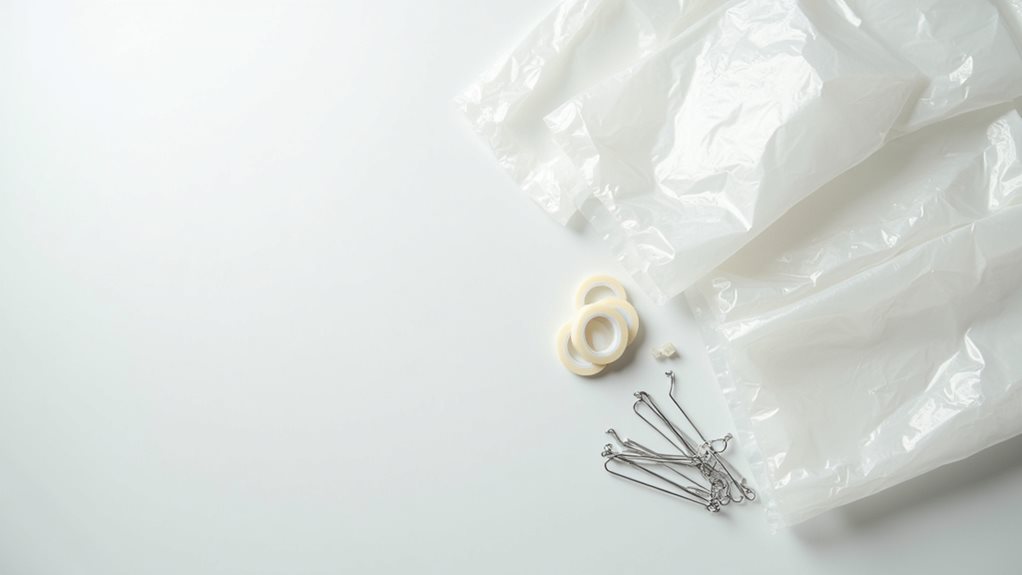
Preparation becomes your recycling superpower when you’re dealing with these clingy plastic protectors that seem determined to hold onto every receipt, hanger, and random bit of debris they’ve collected during their expedition from cleaner to closet.
Before you bundle those dry cleaning bags for their next adventure, you’ll need to evict every single contaminant – receipts hiding in corners, wire hangers playing hide-and-seek, and that mysterious lint that somehow multiplies overnight.
Transform those contaminated plastic bags into recycling gold by banishing every sneaky receipt, rogue hanger, and mysterious lint hitchhiker.
Since these plastic #4 beauties head to specialized drop-off locations rather than your curbside bin, contamination becomes the villain that ruins everyone’s recycling party.
Many grocery stores and retailers offer designated plastic film recycling programs specifically designed to handle dry cleaning bags and similar materials.
Pro tip: invest in a reusable garment bag for future trips, because clean preparation today means successful recycling tomorrow!
Alternatives to Reduce Dry Cleaning Bag Waste

While you’ve mastered the art of preparing dry cleaning bags for recycling, the real game-changer happens when you start preventing that plastic parade from entering your life in the first place.
I learned this lesson after accumulating enough dry cleaning bags to outfit a small greenhouse 😅.
The smartest move? Invest in reusable garment bags that’ll last years while dramatically cutting your plastic footprint.
Push your dry cleaner toward eco-friendly practices by requesting sustainable packaging options, and explore alternative care methods like steaming delicate items at home.
When you do receive those pesky bags, leave them at your cleaner’s for reuse—many partner with companies to recycle dry cleaning bags properly, helping you reduce waste effortlessly.
Don’t forget about those wire hangers either—consider creative upcycling projects that transform them into useful household items instead of letting them pile up in your closet.

